We should now return to the possibility that
also Bb4-17

might have referred to the night when Vindemiatrix
culminated.
... In the present
context 'mouth' has an additional
connotation, given that it refers in part to
Heart of Earth, the deity called 'Mundo'
today. This is the great Mesoamerican earth
deity, the ultimate swallower of all living
beings, depicted in Classic Mayan art (in
the Palenque relief panels, for example) as
an enormous pair of jaws upon whose lips
even the feet of great lords must rest in
precarious balance, and into whose throat
even great lords must fall. Turning to the
contemporary scene, daykeepers who visit the
main cave beneath the ruins of Rotten Cane,
the last Quiché capital, speak of the danger
of falling into 'the open mouth of the
Mundo' there, which is said to be more than
four yards wide ...
If the glyph in question was intended to
suggest the lips of a mouth, then the
head should be in the
west.
|
 |
|
vaha kai |
Vaha. Hollow; opening;
space between the fingers (vaha
rima); door cracks (vaha
papare). Vahavaha, to
fight, to wrangle, to argue with
abusive words. Vanaga. 1. Space,
before T; vaha takitua,
perineum. PS Mgv.: vaha, a
space, an open place. Mq.: vaha,
separated, not joined. Ta.: vaha,
an opening. Sa.: vasa, space,
interval. To.: vaha, vahaa,
id. Fu.: vasa, vāsaà,
id. Niuē: vahā.
2. Muscle, tendon;
vahavaha,
id. Vahahora
(vaha
1 - hora
2), spring. Vahatoga
(vaha
1 - toga
1), autumn. 3. Ta.:
vahavaha,
to disdain, to dislike. Ha.:
wahawaha,
to hate, to dislike. Churchill.
Taki. Dieffenbach, in his
'Travels in New Zealand', mentions
that a title or appellation of the
chiefs there was 'Taki
o te Wenua', and explains
it to mean 'the root of the land'.
As the New Zealanders also came from
the Samoan group, it seems as if
what once was a national
appellation, in course of time
became the title of a chief. If
Diffenbach's interpretation of the
title is correct, it corresponds to
the Hawiian
Kumu-honua, the name of
the first man. The same author also
mentions, p. 67, a place where
chiefs go after death, and says it
is called
Taki-wana ... when a
chief dies he first goes to
Taki-wana,
where his left eye remains and
becomes a star. Then he goes to
Reinga and further.
Spirits sometimes leave the nether
world and come back on earth and
communicate with the living ...
Reinga was a place near
the North Cape, New Zealand, where
the spirits of the dead collected
previous to their final departure.
Fornander.
|
MARCH 17 |
18 |
19 (78 = 142 - 64) |
20 (444 = 365 + 79) |
0h (*365) |
|
... Ecclesiastically, the
equinox is reckoned to be on
21 March (even though the
equinox occurs,
astronomically speaking, on
20 March [*364] in most
years) ...
... In
view of the almost universal
prevalence of the Pleiades
year throughout the
Polynesian area it is
surprising to find that in
the South Island and certain
parts of the North Island of
New Zealand and in the
neighboring Chatham Islands,
the year began with the new
Moon after the yearly
morning rising, not of the
Pleiades, but of the star
Rigel [*78] in Orion
...
|
Counting in the
tresses of
Pacha-mama
from right to
left: |
|
1 |
26 |
78 |
1 |
29 |
90 |
|
2 |
26 |
2 |
30 |
|
3 |
26 |
3 |
31 |
|
4 |
25 |
104 |
4 |
34 |
124 |
|
5 |
26 |
5 |
31 |
|
6 |
27 |
6 |
30 |
|
7 |
26 |
7 |
29 |
|
Total = 396 =
182 + 214 (= 364
+ 32) |
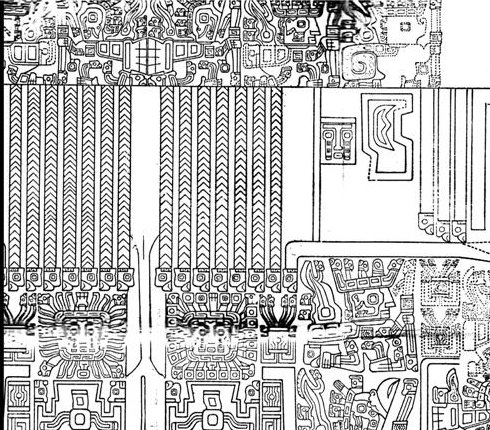
|
 |
 |
 |
 |
 |
|
Gb5-8 |
Gb5-9 |
Gb5-10 (363) |
Gb5-11
(229 + 135) |
Gb5-12 (365) |
|
4h (60.9)
JĪSHUĬ = λ Persei
(60.7)
COR CAROLI (α
Canum Ven.) |
υ Persei (61.2) |
BEID (Egg) = ο¹ Eridani
(62.2),
μ
Persei (62.8)
VINDEMIATRIX
( ε Virginis) |
Al Dabarān-2 (The Follower)
HYADUM I = γ Tauri (63.4)
*22.0 = *63.4 - *41.4 |
HYADUM II = δ¹ Tauri
(64.2) |
|
May 20 (140) |
21 |
22 (54 + 22 * 4) |
23 (*428) |
24 (509) |
|
... Odysseus and his fleet
were now in a mythic realm
of difficult trials and
passages, of which the first
was to be the Land of the
Cyclopes, 'neither nigh at
hand, nor yet afar off',
where the one-eyed giant
Polyphemus, son of the god
Poseidon (who, as we know,
was the lord of tides and of
the Two Queens, and the
lord, furthermore, of
Medusa), dwelt with his
flocks in a cave. 'Yes, for
he was a monstrous thing and
fashioned marvelously, nor
was he like to any man that
lives by bread, but like a
wooded peak of the towering
hills, which stands out
apart and alone from
others.' Odysseus, choosing
twelve men, the best of the
company, left his ships at
shore and sallied to the
vast cave. It was found
stocked abundantly with
cheeses, flocks of lambs and
kids penned apart, milk
pails, bowls of whey; and
when the company had entered
and was sitting to wait,
expecting hospitality, the
owner came in, shepherding
his flocks. He bore a
grievous weight of dry wood,
which he cast down with a
din inside the cave, so that
in fear all fled to hide.
Lifting a huge doorstone,
such as two and twenty good
four-wheeled wains could not
have raised from the ground,
he set this against the
mouth of the cave, sat down,
milked his ewes and goats,
and beneath each placed her
young, after which he
kindled a fire and spied his
guests
...
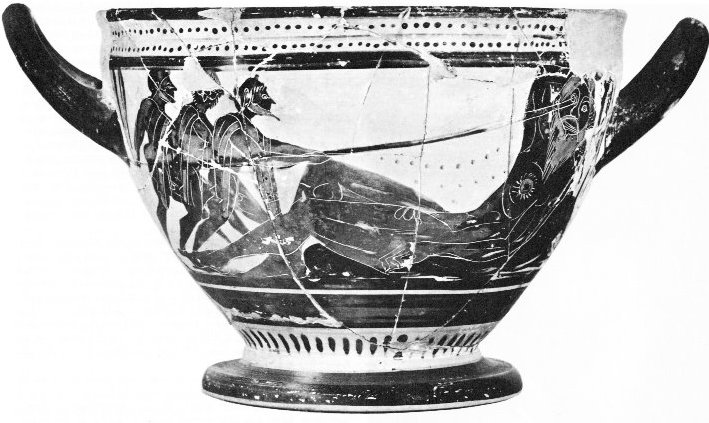 |
|
°May 16 (136) |
17 |
18 |
19 (*424) |
20 (*60) |
|
'April 23 |
24 (114) |
25
(*400) |
26 (*36) |
27 |
|
"April 9 (99) |
10 (465) |
11 |
12 (*22) |
13 |
Although experience has taught us
not to expect a precise
correspondence:
|
 |
*120
τ Aquilae (*303) |
MAY 16 (136 = 200 - 64)
Jan 18 (383) |
|
Ga2-26 |
|
 |
ALTAIR (*300)
*117
|
Jan 15 (380)
MAY 13 (133) |
|
Cb4-20 |
|
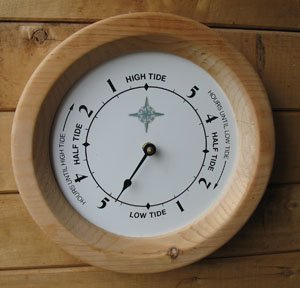
... Moon returns to the same
place in the sky after about
24 hours and 50 minutes,
which means the tidal period
will be half as long (12
hours and 25 minutes)
... 24h 50'
corresponds to (24 + 50/60)
* 365¼
/ 24 = ca 380 right
ascension days (= 364 + 16).
Presumably the difference
between 380 (Moon) and 364
(Sun) - which happened to
correspond to the difference
between when the star
returned to visibility and
its true heliacal position -
motivated the addition of an
extra cycle ... |
|
133 (MAY 13)
- 15 (January 15) = 118 =
136 (MAY 16) - 18 (January
18) = 4 * 29½ = 472 / 4. |
And then we should rather consider
the Full Moon stars than those
rising with the Sun, because the
Fish-hook on side b of the G tablet pointed us in
that direction (→ 118):
|
NOV 19 |
20 (324) |
21 |
22 (141 + 185) |
23 |
24 (*248) |
 |
 |
 |
 |
 |
 |
|
Gb1-14 (9 * 27) |
Gb1-15 (244) |
Gb1-16 |
Gb1-17 (61 + 185) |
Gb1-18 |
Gb1-19 (248) |
 |
205 |
 |
|
Ga2-11 (41) |
Gb1-18 (247 = 41
+ 183 + 23) |
|
ºJune 30 (181) -
heliacal Sirius |
182 |
'Dec 30 (364) -
nakshatra Sirius |
|
ºDec 30 (364 =
181 + 183) |
'June 30 (181 =
364 - 183) |
|
23 =
precessional
depth from the
time of Gregory
XIII down to
Roman times |
|
... Thus was dry
land fished up
by Maui, which
had lain beneath
the sea ever
since the great
rains that were
sent by the Sky
father and the
god of winds.
The Maori people
say that the
north island of
Aotearoa,
which certainly
is shaped much
like a fish, is
Te Ika a Maui;
and according to
some tribes the
south island is
the canoe from
which he caught
it. And his hook
is the cape at
Heretaunga
once known as
Te matau a Maui,
Maui's Fishhook
(Cape
Kidnappers). In
some of the
other islands
which lie across
the sea towards
Hawaiki,
the people say
that theirs is
the land that
Maui pulled up
from below
...
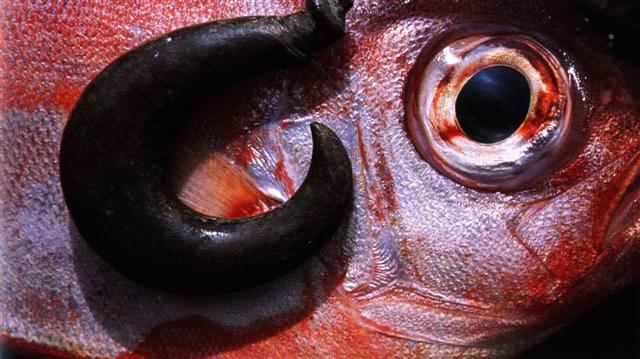 |
|
|
GREDI (Goat) = α Capricorni
(307.2),
σ
Capricorni (307.5),
ALSHAT (The Sheep) = ν
Capricorni
(307.9) |
Al Sa’d al Dhabih-20 (Lucky
One of the Slaughterers) /
Ox / Herd Boy-9
(Buffalo)
DABIH = β Capricorni
(308.0),
κ
Sagittarii (308.1),
SADIR (Hen's Breast) = γ
Cygni (308.4),
PEACOCK = α Pavonis
(308.7)
*267.0 = *308.4 - *41.4 |
OKUL = π Capricorni
(309.6),
BOS =
ρ
Capricorni
(309.9)
ARNEB (α Leporis)
MINTAKA (δ Orionis) |
ο
Capricorni (310.2),
θ
Cephei (310.5)
HEKA (λ
Orionis)
ALNILAM (ε Orionis) |
ROTTEN MELON = ε Delphini,
φ
Pavonis (311.2),
η
Delphini (311.4),
ζ
Delphini,
ρ
Pavonis (311.7)
PHAKT (α
Columbae)
ALNILAK (ζ
Orionis) |
ROTANEV = β Delphini,
ι Delphini (312.3), τ
Capricorni (312.6), κ
Delphini (312.7),
SVALOCIN = α Delphini,
υ Capricorni, υ Pavonis
(312.8) |
|
KHUFU |
KHAFRE |
MENKAURE
|
.jpg) |
|
Jan 22 |
23 (*308) |
24 |
25 |
26 |
27 (392) |
|
°Jan
18 |
19 (*304) |
20 |
21 |
22 |
23 (388) |
|
'Dec 26 |
27 |
28 |
29 |
30 (364) |
31 (*285) |
|
"Dec 12 |
13 |
14 (348) |
15 |
16 (350) |
17 (*271) |
|
CLOSE TO THE FULL MOON: |
|
MAY 20 |
21 |
22 |
23 (*63) |
24 (144) |
25
(290 / 2) |
|
AL TARF (The End) = β Cancri
(124.3)
RAS ALGETHI (α Herculis) |
χ
Cancri (125.2),
BRIGHT FIRE = λ Cancri
(125.4)
*84.0 = *125.4 - *41.4 |
AVIOR = ε Carinae (126.4),
φ
Cancri (126.8)
*85.0 = *126.4 - *41.4 |
ο Ursae Majoris (127.4)
*86.0 = *127.4 - *41.4 |
Pushya-8 (Nourisher)
υ Cancri (128.1), θ Cancri
(128.2) |
Āshleshā-9 (Embrace) /
Willow-24 (Stag)
π¹ Ursa Majoris,
δ HYDRAE (129.6),
AL MINHAR AL SHUJĀ = σ
Hydrae, MUSEIDA = π² Ursae
Majoris
(129.9)
RAS ALHAGUE (α Ophiuchi) |
 |
|
July 23 (204) |
24 |
25 |
26 |
27 |
28 (*129) |
|
°July 19 (200) |
20 |
21 (*122) |
22 |
23 |
24 |
|
'June 26 (177) |
27 |
28 (*99) |
29 |
SIRIUS (181) |
'July 1 |
|
"June 12 |
13 |
14 (*85) |
15 |
16 |
17 (168) |
 |
 |
 |
 |
 |
 |
|
Ga3-1 |
Ga3-2 |
Ga3-3 |
Ga3-4
(63) |
Ga3-5 |
Ga3-6 |
|
he ruru
- he taiko |
he kumara - he kiakia |
he tuvi -
he tuao |
|
...
Sula
cyanops
... It should be pointed out
that the combined name
ruru-taiko refers
in MAO. to a black petrel (Procellaria
parkinsoni). There
are no cultural data
available for ruru,
which seems to be derived
from PPN. *lulu
'owl'... There are no
cultural data available for
... taiko (compare
RAR. taiko 'black
petrel', MGV. tiaku
'petrel?, omen of death',
but the textual association
of taiko and spirits
should be dept in mind
...

... Teke took command of the
Hanau Eepe and went with
them to Poike. After he had
settled them there, Teke
said to the Hanau Eepe,
'Settle her, work, and keep
peace among yourselves (he
mee o mahamaha kina);
let this be the goal of
every one of you!'
Then Teke
assumed royal powers (pahera
ariki) and passed them
on to Iko. Teke installed
the king; Iko was (now) the
king (ariki) of the
Hanau Eepe. Teke called out
to the men, 'Iko is your
king, oh people (mahingo)!'The
Hanu Eepe remained there.
Teke returned. (He) came to
Oromanga (name corrected;
alternative translation:
Along came the adopted rat,
kiore ma(a)nga.).
That was Iko.
Twenty-five years ... [E:85]

... The
transference of the name for
sweet potatoes, kumara,
to a sea bird (Oestrelata
incerta or
Oestrelata leucoptera)
presents a problem in
taxonomy. In a short
recitation that accompanies
the string game, the next
bird on the list, kiakia,
the white tern, is
associated with the leaves
of the sweet potato ...
White tern.
Leucanus albus royanus
...
... Grey tern, Tuvituvi
(Procelsterna caerulea
skottsbergi)
...
Anous stolidus unicolor
... The dark brown tern with
a round tail is called
tuao ... I was told that
tavi is a small,
lead-colored bird that lives
on the little islets (motu)
off the coast. He is
supposed to look like the
tuvi, the grey tern, and
owes his name to his call
...
Ao. Large dance
paddle. 1. Command, power,
mandate, reign: tagata
ao, person in power, in
command, ruler. 2. Dusk,
nightfall. 3. Ao nui,
midnight. 4. Ao popohaga,
the hours between
midnight and dawn. Aô,
to serve (food); ku-âo-á
te kai i ruga i te kokohu,
the food is served on a
platter. Vanaga. 1.
Authority, kingdom, dignity,
government, reign (aho);
topa kia ia te ao,
reign; hakatopa ki te ao,
to confer rank; ao ariki,
royalty; ka tu tokoe aho,
thy kingdom come. PS Mgv.:
ao, government,
reign. Mq.: ao,
government, reign, command.
Sa.: ao, a title of
chiefly dignity; aoao,
excellent, surpassing,
supreme. 2. Spoon; ao
oone, shovel. 3. Dancing
club T. 3. Aonui (ao-nui
2), midnight. 4. Pau.: ao,
the world. Mgv.: ao,
id. Ta.: ao, id. Mq.:
aomaama, id. Ma.:
ao, id. 5. Pau.: ao,
happy, prosperity. Mgv.:
ao, tranquil conscience.
Ta.: ao, happiness.
6. Mgv.: ao, cloud,
mist. Ta.: ao, id.
Mq.: ao, id. Sa.:
ao, cloud. Ma.: ao,
id. 7. Mgv.: ao,
hibiscus. 8. Ta.: ao,
day. Mq.: ao, day
from dawn to dark. Sa.:
ao, id. Ma.: ao,
id. 9. Ta.: ao, a
bird. Ha.: ao, id.
10. Mq.: ao,
respiration, breath. Ha.:
aho, breath. 11. Mq.:
ao, to collect with hand
or net. Sa.: ao, to
gather. Ma.: ao, to
collect. Ta.: aoaia,
to collect food and other
things with care. Churchill. |
When we look at the stars in the 5
('high-five') nights centered on MARCH 19,
... Nut, whom the Greeks sometimes
identified with Rhea, was goddess of the
sky, but it was debatable if in historical
times she was the object of a genuine cult.
She was Geb's twin sister and, it was said,
married him secretly and against the will of
Ra. Angered, Ra had the couple brutally
separated by Shu and afterwards decreed that
Nut could not bear a child in any given
month of any year. Thoth, Plutarch tells us,
happily had pity on her. Playing draughts
with the Moon, he won in the course of
several games a seventy-second part of the
Moon's light with which he composed five new
days. As these five intercalated days did
not belong to the official Egyptian calendar
of three hundred and sixty days, Nut was
thus able to give birth successively to five
children: Osiris, Haroeris (Horus), Set,
Isis and Nepthys ...
we can perceive also the reverse of an egg, viz. the
time of death. The mouth of the cavern from
where creatures emerge will later serve as
the mouth 'more than 4 yards wide' into
which they will tumble:
|
|
MARCH 17 |
18 |
19 (78 = 142 - 64) |
20 (444 = 365 + 79) |
0h (*365) |
|
... Ecclesiastically, the
equinox is reckoned to be on
21 March (even though the
equinox occurs,
astronomically speaking, on
20 March [*364] in most
years) ...
... In
view of the almost universal
prevalence of the Pleiades
year throughout the
Polynesian area it is
surprising to find that in
the South Island and certain
parts of the North Island of
New Zealand and in the
neighboring Chatham Islands,
the year began with the new
Moon after the yearly
morning rising, not of the
Pleiades, but of the star
Rigel [*78] in Orion
...
|
Counting in the
tresses of
Pacha-mama
from right to
left: |
|
1 |
26 |
78 |
1 |
29 |
90 |
|
2 |
26 |
2 |
30 |
|
3 |
26 |
3 |
31 |
|
4 |
25 |
104 |
4 |
34 |
124 |
|
5 |
26 |
5 |
31 |
|
6 |
27 |
6 |
30 |
|
7 |
26 |
7 |
29 |
|
Total = 396 =
182 + 214 (= 364
+ 32) |
 |
 |
 |
 |
 |
 |
|
Gb5-8 (19 * 19) |
Gb5-9 |
Gb5-10 (363) |
Gb5-11
(229 + 135) |
Gb5-12 (248 + 118) |
|
4h (60.9)
JĪSHUĬ = λ Persei
(60.7)
COR CAROLI (α
Canum Ven.) |
υ Persei (61.2) |
BEID (Egg) = ο¹ Eridani
(62.2),
μ
Persei (62.8)
VINDEMIATRIX
( ε Virginis) |
Al Dabarān-2 (The Follower)
HYADUM I = γ Tauri (63.4)
*22.0 = *63.4 - *41.4 |
HYADUM II = δ¹ Tauri
(64.2) |
|
May 20 (140) |
21 |
22 (54 + 22 * 4) |
23 (*428) |
24 (509) |
|
... Odysseus and his fleet
were now in a mythic realm
of difficult trials and
passages, of which the first
was to be the Land of the
Cyclopes, 'neither nigh at
hand, nor yet afar off',
where the one-eyed giant
Polyphemus, son of the god
Poseidon (who, as we know,
was the lord of tides and of
the Two Queens, and the
lord, furthermore, of
Medusa), dwelt with his
flocks in a cave. 'Yes, for
he was a monstrous thing and
fashioned marvelously, nor
was he like to any man that
lives by bread, but like a
wooded peak of the towering
hills, which stands out
apart and alone from
others.' Odysseus, choosing
twelve men, the best of the
company, left his ships at
shore and sallied to the
vast cave. It was found
stocked abundantly with
cheeses, flocks of lambs and
kids penned apart, milk
pails, bowls of whey; and
when the company had entered
and was sitting to wait,
expecting hospitality, the
owner came in, shepherding
his flocks. He bore a
grievous weight of dry wood,
which he cast down with a
din inside the cave, so that
in fear all fled to hide.
Lifting a huge doorstone,
such as two and twenty good
four-wheeled wains could not
have raised from the ground,
he set this against the
mouth of the cave, sat down,
milked his ewes and goats,
and beneath each placed her
young, after which he
kindled a fire and spied his
guests
...
 |
|
°May 16 (136) |
17 |
18 |
19 (*424) |
20 (*60) |
|
'April 23 |
24 (114) |
25
(*400) |
26 (*36) |
27 |
|
"April 9 (99) |
10 (465) |
11 |
12 (*22) |
13 |
|
NAKSHATRA
STARS: |
|
SEPT 15 |
16 |
17 (260 = 443 - 183) |
18 (9
* 29) |
19 |
|
υ
Herculis (242.3),
ρ Cor. Borealis (242.4),
ι
Cor. Borealis (242.5),
θ
Draconis (242.6),
ξ
Scorpii (242.7)
*201.0 = *242.4 - *41.4
SCHEDIR (Breast) α
Cassiopeiae) |
16h (243.5)
ACRAB (Scorpion) = β
Scorpii, JABHAT AL ACRAB
(Forehead of the Scorpion) =
ω Scorpii
(243.3), θ Lupi,
RUTILICUS = β Herculis
(243.5),
MARFIK (Elbow) = κ Herculis
(243.7), φ Herculis (243.8) |
ψ
Scorpii (244.6),
LESATH (Sting) = ν Scorpii
(244.8) |
χ
Scorpii (245.1),
YED PRIOR (Hand in Front) =
δ Ophiuchi,
δ
Tr.
Austr. (245.5) |
YED POSTERIOR (Hand Behind)
= ε Ophiuchi, RUKBALGETHI
SHEMALI (Northern Knee of
the Giant) = τ Herculis
(246.6).
δ
Apodis (246.7),
ο
Scorpii (246.8) |
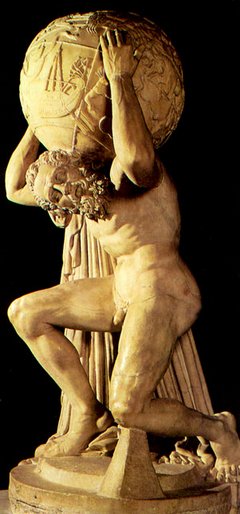 |
|
Nov 18 (209 + 113) |
19 (*243) |
20 (324 = 142 + 182) |
21 |
22 |
|
... the
Inuit who regard sun
as female and moon as male,
sister and brother: 'The
moon, being without food,
wanes slowly away from
starvation until it is quite
lost from sight; then the
sun reaches out and feeds it
from the dish in which the
girl has placed her breast.
After the moon is fed and
gradually brought to the
full, it is then permitted
to starve again, so
producing the waxing and
waning every month
...
Omo.
To suck;
omoaga, bulky cloud;
ragi omoaga cumulus;
omoomo; to suck
repeatedly, to suckle;
omotahi, to win
everything at a game (lit:
to suck whole):
omotahi-mai-á e au, he
has cleaned me out;
omotohi, full (of the
moon); ku-omotohiá te
mahina, the moon is
full. Vanaga. Rima omo,
infidelity, faithless,
unfaithful. Omoomo,
to smack the lips, to suck
the breast, to smoke
tobacco, to taste of;
hakaomoomo, to suckle,
to paint. Churchill. Ta.:
Omotu, an ember, a coal.
Mq.: komotu, omotu,
firebrand. Churchill.
Ariki (o)motongi.
[E:1].
 |
.jpg)
|














.jpg)








.jpg)